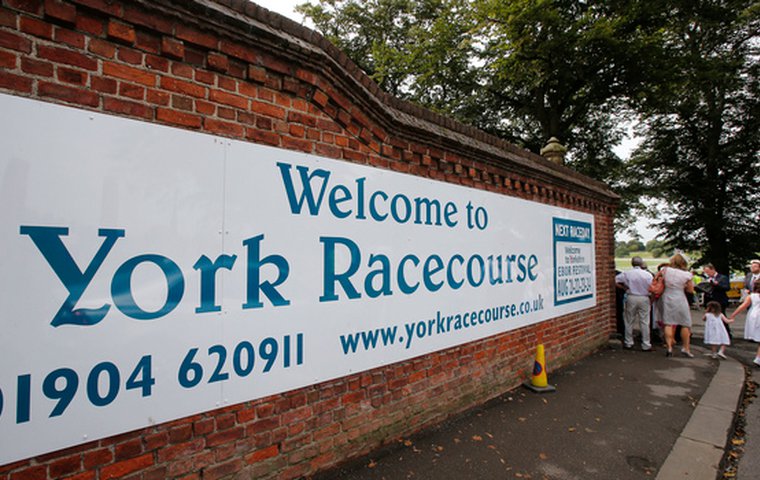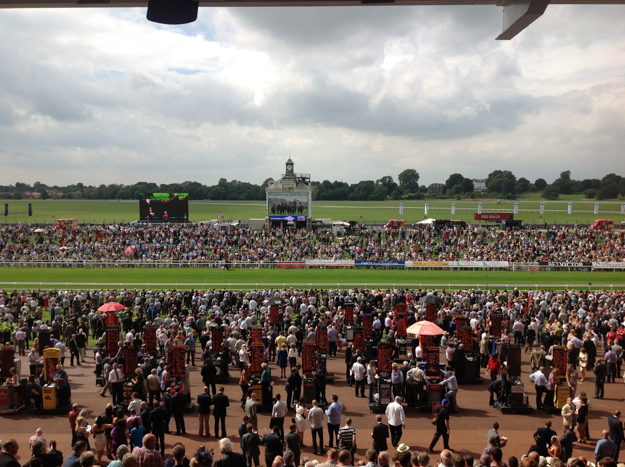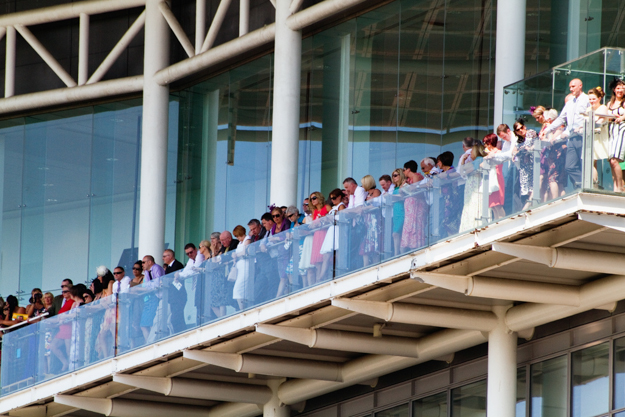
For lovers of racing, little compares to an afternoon (or evening) at the track. The sport is best experienced in the flesh, and the world’s race courses offer diverse ways to enjoy this pursuit. While we can’t literally transport you to the races, we’ll do our best to bring these tracks to you in a series of regular profiles. Today, in the third part of his four-part profile of historic York Racecourse in England, Sean Magee describes the amenities racegoers can expect at the track.
Read about the history of York Racecourse
Read about York's quality racing programme
Read the inside story from the man at the helm
----------
THE COURSE
York was an open-ended track – as opposed to a circuit – until 2005, when the course hosted Royal Ascot. The requirement to accommodate Royal Ascot races of two miles and longer necessitated the provision of a round track, with the open end beyond the winning post closed up with a sweeping curve that joins the back straight near the 1½ mile start.
The left-handed circuit is flat and approximately 15 furlongs round, with races over 5, 5½, and 6 furlongs run on the straight course, and those over 7 furlongs started from a spur off the main track. On the round course, the run-in from the home turn is 4½ furlongs.
ENCLOSURES
In descending cost of entrance (highest at the Ebor Festival), the three main categories of accommodation for York racegoers are:
COUNTY STAND
The old County Stand, complete with its red, white, and blue barber’s-poles, is one of the most charming and atmospheric buildings in British racing, but this enclosure also features very modern facilities in the shape of the Melrose Stand (built 1989) and Ebor Stand (2003) – along with plenty of access to Champagne lawns. Mention must be made of the Melrose Club Lounge, which allows County Stand racegoers an enhanced experience – a balcony overlooking the course, the so-called “Yorkshire Tapas” plus afternoon tea – for a very reasonable extra cost.
GRANDSTAND AND PADDOCK
Less formal than the County Stand, this enclosure includes parts of the Knavesmire Stand (1996).
COURSE ENCLOSURE
With its distinctive Clock Tower – a building that used to display runners, jockeys, and other race information – the Course Enclosure is popular for racegoers, many of them en famille, who want to picnic and just enjoy the space as well as the proximity of the racing action without requiring access to the parade ring (coverage of which is provided on screens within the enclosure).
For those requiring their own space, there are private boxes in the Knavesmire, Melrose, and Ebor Stands.

STATE OF THE PLATE – AND THE GLASS (ESPECIALLY THE CHAMPAGNE FLUTE)
When it comes to food and drink, York racegoers are exceptionally well catered for, with all manner of refreshment available in all enclosures – and much of the food on offer is locally sourced – for instance, Mackenzies Smokehouse in Harrogate for fish, the Wensleydale Creamery for cheese.
At one end of the dining spectrum, the Voltigeur Restaurant and Ebor Restaurant offer spectacular views of the racecourse action. At the other end, there are outlets for those who want to grab a quick snack as they hurry toward the parade ring. And there are plenty of bars – though understandably enough the Champagne lawns do become extremely busy on a sunny day.
As has been noted, York is renowned throughout British racing for its reasonable Champagne tariff, with a bottle of the house fizz retailing at around £30 ($50). And the course management rightly takes this matter very seriously, constantly improving its deals with Champagne houses and sampling their wares (a tough assignment, but someone has to do it), and all that effort pays off: It is claimed that York sells more Champagne per racegoer than any other course in Britain.
York’s other signature drink is beer. The racecourse has had a close relationship with the John Smith’s brewery since 1960, when the John Smith’s Magnet Cup was first run, and that sponsorship arrangement has remained intact for more than a half century. John Smith’s Cup day in mid-July is one of the course’s great annual occasions, with a crowd in excess of 42,000 attending in 2013.
For dining options, prices, availability, etc., visit the York website.
VIEWING
York is a large circuit, but one without any blind spots for the racegoer who likes to follow the racing action through binoculars (which can be hired on the course). For those without binoculars, there are plenty of large screens showing the action.

BETTING OUTLETS
Contrary to widespread opinion, it is not compulsory for racegoers to bet. But for those wanting a wager, York provides the customary opportunities:
- Course bookmakers, who are easily accessible by all racegoers, except (by tradition) those in the County Stand
- The Tote, all around the course
- Betting shops
GETTING THERE
By road
The course is easily accessible – and well signed – from the A64 and A1079 motorways; postcode for SatNav: YO23 1EX; ample parking.
By public transport
York station is about a mile from the racecourse, with plenty of taxis and buses connecting the two.
By air
Light aircraft landing at nearby Rufforth Airfield; helicopter landing on racecourse infield. Contact Helicopter and Aviation Services Ltd. to make arrangements: phone 01427-718800.
TEN THINGS YOU MIGHT NOT KNOW ABOUT YORK, BUT SHOULD:
1. “Dr. Syntax loses his money at the race ground at York”, a famous early-19th-century cartoon by the artist Thomas Rowlandson, depicts the agitated doctor watching his horse get beaten on the Knavesmire.
2. The St Leger, final Classic of the season in Britain, was run at York in 2006 while Doncaster Racecourse was closed for rebuilding. The winner was Sixties Icon.
3. In May 1982, Pope John Paul II celebrated Mass on the Knavesmire in front of a crowd estimated at 200,000.
4. Current chairman of the York Racecourse Committee is Lord Teddy Grimthorpe, racing manager to Prince Khalid Abdullah, whose bloodstock operation Juddmonte Farms sponsors the International Stakes at the Ebor Festival.
5. When Alex Greaves rode Ya Malak to dead-heat with Coastal Bluff in the 1997 Nunthorpe Stakes, she became the first female rider to win a G1 race in Britain.
6. With a prize fund of £800,000 ($1,350,000), the 2014 Juddmonte International Stakes on Aug. 20 will be the richest race ever run at York.
7. York will offer prize money in excess of £6 million ($10.2 million) in 2014.
8. Part of the 18th-century grandstand designed by John Carr survives in the Champagne lawn area of the course.
9. The winning owner of the Gimcrack Stakes, York’s major 2-year-old race of the year, enjoys the privilege of making the keynote speech – which most owners take as the opportunity to suggest how to right racing’s wrongs – at the Gimcrack Dinner the following December.
10. In 2013, Adrian Kay, head groundsman at York Racecourse, won the title “Professional Groundsman of the Year” at the Institute of Groundsmanship, seeing off competition from such sports as football, rugby, cricket, and tennis.
---


